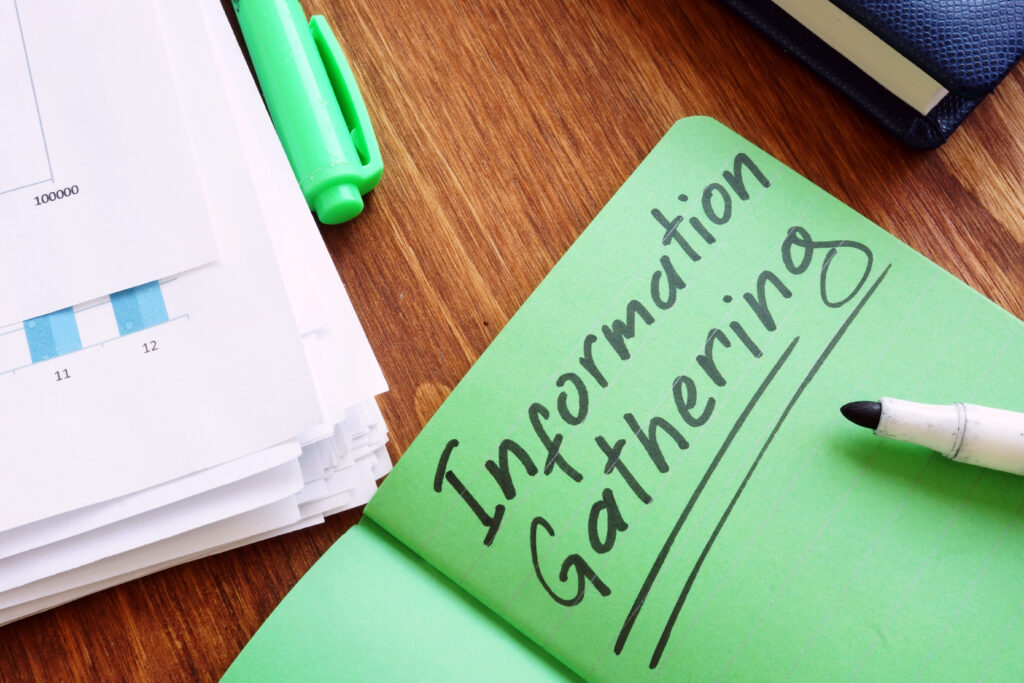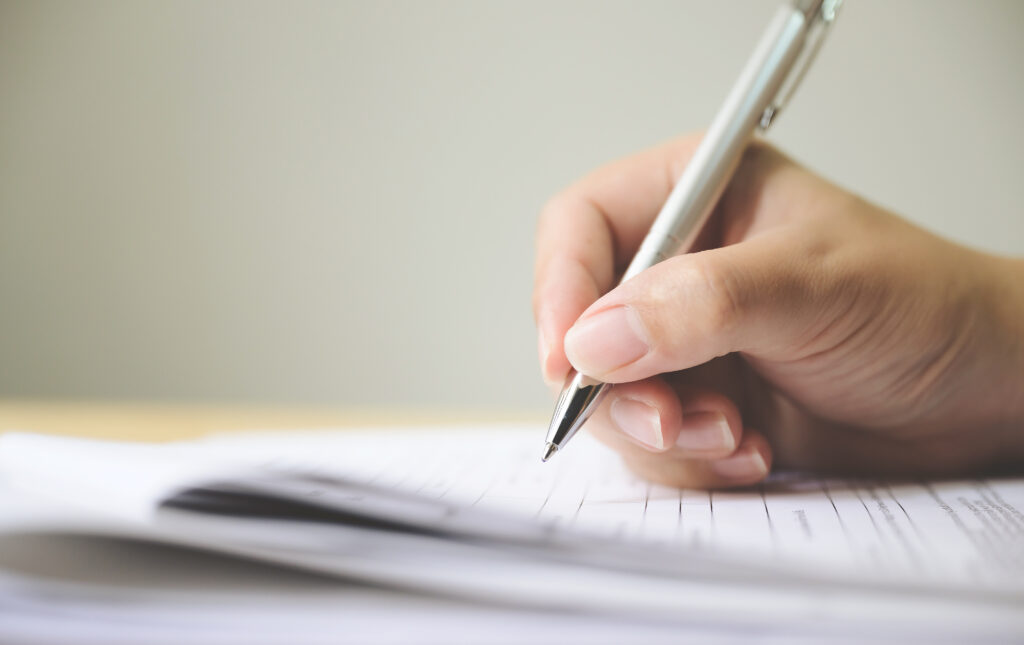The moments following an automobile accident are overwhelming, so you need to be prepared and informed as much as possible.
At The Perecman Firm, we help New Yorkers gain compensation after a car crash. An attorney from our law firm will protect your rights and get the best possible outcome for your case.
Before talking to a Long Island car accident lawyer, there are steps you need to take. Whether you’re reading this after the crash or for future reference, the steps you take will impact your recovery and legal rights.
Immediate Steps at the Car Accident Scene
1. Safety First
- Move vehicles to the shoulder or a safe area if possible, and if damage is minor.
- Turn on hazard lights immediately to alert other drivers
- Set up warning triangles or flares at 50, 100, and 150 feet from the accident if available
- Check yourself and your passengers for injuries, but avoid moving anyone with neck or back pain
- Stay calm and focused. Take deep breaths and try to think clearly
- If the accident occurs at night, keep your interior lights on for visibility
2. Call Emergency Services (911)
- When calling 911, provide:
- Exact location (cross streets, landmarks, direction of travel)
- Number of vehicles involved
- Presence of injuries or trapped passengers
- Any hazardous conditions (fuel leaks, fire, downed power lines)
- Stay on the line until dispatchers say it's okay to hang up
- Follow any instructions provided by emergency responders
- Note the names and badge numbers of responding officers
- Request the accident report number and instructions for getting a copy
3. Document Everything
- Take extensive photos, including:
- All vehicle damage from multiple angles
- Close-ups of damage
- Wide shots showing the entire accident scene
- License plates of all vehicles
- Road conditions (potholes, debris, ice)
- Traffic signs and signals
- Skid marks and debris patterns
- Weather conditions
- Interior damage
- Injuries (if visible)
- Record video walking around the entire scene
- Make voice recordings describing:
- Weather conditions
- Road conditions
- Traffic patterns
- Your immediate recollection of events
4. Gather Information
From all involved parties, collect:

- Full names and contact information
- Insurance information ( company names, policy numbers)
- License plate numbers
- Vehicle details:
- Make, model, and year
- Vehicle Identification Number (VIN)
- Registration information
- Visible damage
- Employment information if in a commercial vehicle
- Rental car information, if applicable
5. Witness Information
- Get contact details from all witnesses
- Ask witnesses to write down or record what they saw
- Note where witnesses were positioned during the accident
- Get the contact information for passengers in all vehicles
- Ask nearby businesses if they have security cameras that might have captured the accident
- Document names and contact information of emergency responders
Medical Attention: Your Top Priority After a Car Accident
Even if you feel fine, some injuries don’t appear right away. Watch for:
Head and Brain Injuries
- Headaches
- Dizziness
- Memory problems
- Confusion
- Nausea
- Vision changes
- Sensitivity to light or noise
- Sleep disturbances
Neck and Spine Injuries
- Whiplash symptoms
- Neck pain or stiffness
- Back pain
- Tingling or numbness
- Reduced range of motion
- Shoulder pain
- Referred pain in arms or legs
Soft Tissue Injuries
- Bruising
- Swelling
- Muscle strain
- Joint pain
- Limited mobility
- Muscle spasms
- Deep tissue bruising
Internal Injuries
- Abdominal pain
- Chest pain
- Difficulty breathing
- Bruising patterns
- Dizziness or fainting
- Blood in urine
- Irregular heartbeat
Psychological Trauma
- Anxiety about driving
- Depression
- Post-traumatic stress disorder (PTSD)
- Sleep disturbances
- Mood changes
- Flashbacks
- Panic attacks
Medical Documentation to Keep in Mind
Some examples of medical records you should save include:
- Initial emergency room or doctor's visit records
- Diagnostic test results (X-rays, MRIs, CT scans)
- Treatment plans and recommendations
- Medication prescriptions
- Physical therapy protocols
- Mental health treatment
- Follow-up appointment schedules
- Specialist referrals
- Pain management plans
- Recovery progress notes
Protecting Your Rights After an Auto Accident
Insurance Claims Process
Initial Steps:

- Notify your insurance company
- Open a claim file
- Get the claim number and adjuster contact
- Review your policy coverage
- Understand your deductibles
- Know your coverage limits
- Document all communication
Types of Coverage to Consider:
- Personal Injury Protection (PIP)
- Bodily Injury Liability
- Property Damage Liability
- Uninsured/Underinsured Motorist
- Collision Coverage
- Comprehensive Coverage
- Medical Payments Coverage
- Lost Wages Coverage
- Rental Car Coverage
Common Insurance Tactics to Watch For
Insurance companies use tactics to minimize their payouts after an accident, so it’s a good idea to recognize some of these strategies before encountering them.
One of their most common approaches is the quick settlement offer, where they contact you shortly after the accident, hoping you'll accept a low offer before understanding the full extent of your injuries or future medical needs.
Some insurance companies will even delay processing a claim. They will request excessive or unnecessary documentation, creating a complicated paper trail. They may also dispute liability even in clear-cut cases or attempt to minimize the severity of your injuries to justify lower compensation offers.
Another concerning practice is their approach to medical treatment. Insurance adjusters often question prescribed treatments or challenge doctors' professional judgment about care needs.
They might monitor your physical activities and social media presence, looking for anything they can use to challenge your claim. Something as simple as a social media post or being photographed carrying groceries could be used out of context to dispute your injury claims.
The Legal Process After a Car Accident
The legal process is a lot to deal with after a car accident. A car accident attorney from our law firm can guide you through every step, from initial assessment to final resolution.
Case Evaluation
Your auto crash lawyer will carefully assess your case, considering factors such as:
- Liability: Who was at fault for the accident?
- Insurance Coverage: What insurance coverage is available to compensate for your losses?
- Injury Severity: The extent of your physical and emotional injuries.
- Long-Term Impacts: Potential future medical expenses and lost wages.
- Settlement vs. Trial: Weighing the pros and cons of each option.
Evidence Collection
To build a strong case, our legal team will gather evidence such as:
- Police Reports: Official documentation of the accident.
- Witness Statements: Accounts from people who witnessed the accident.
- Expert Opinions: Expert analysis of accident reconstruction, medical conditions, or other relevant areas.
- Medical Records: Documentation of injuries, treatment, and prognosis.
- Employment Records: Proof of lost wages and earning capacity.
- Surveillance Footage: Video evidence of the accident or related events.
- Weather Reports: Information about weather conditions at the time of the accident.
- Vehicle Maintenance Records: Evidence of vehicle condition and potential mechanical failures.
The legal process typically involves the following stages:
- Initial Consultation: Discussing your case and legal options.
- Case Investigation: Gathering evidence and building a solid case.
- Medical Treatment Completion: Confirming complete recovery or reaching maximum medical improvement.
- Demand Package Preparation: Formulating a settlement demand letter.
- Settlement Negotiations: Negotiating with the insurance company to reach a fair settlement from the other side.
- Lawsuit Filing (if necessary): Initiating a lawsuit if a settlement cannot be reached.
- Discovery Process: Exchanging information and evidence with the opposing party.
- Mediation or Arbitration: Alternative dispute resolution methods.
- Trial Preparation: Preparing for trial, including witness testimony and evidence presentation.
- Trial (if needed): Presenting your case before a judge and jury.
By understanding the legal process and working with an experienced legal team, you can protect your rights and gain the compensation you need.
Long-Term Considerations After an Auto Accident
Medical Treatment Planning:

- Plan for future medical needs
- Consider rehabilitation requirements
- Evaluate the need for:
- Physical therapy
- Occupational therapy
- Psychological counseling
- Pain management
- Specialty care
- Surgical interventions
Financial Planning:
- Project future medical costs
- Evaluate lost earning capacity
- Plan for long-term care needs
- Evaluate insurance needs
- Consider disability benefits
Quality of Life Adjustments:
- Home modifications needed
- Career changes required
- Family role changes
- Long-term disability management
Special Circumstances in Car Accidents
Rideshare Accidents (Uber/Lyft)
Insurance Coverage Phases
- App off: Driver's personal insurance applies
- App on, waiting for the ride: Contingent liability coverage
- En route to pickup: Commercial insurance is active
- A passenger in the vehicle: Full commercial coverage
Passenger Guidelines
- Screenshot ride details immediately
- Document driver information and vehicle details
- Save the trip receipt and route information
- Report accident through the app's safety features
- Document pick-up and drop-off locations
- Save all in-app communications
Commercial Vehicle Incidents
Immediate Documentation Needs
- Driver's commercial license information
- Company name and contact details
Potential Liable Parties
- Truck driver
- Trucking company
- Vehicle manufacturer
- Maintenance providers
- Cargo loading company
- Parts manufacturers
- Road maintenance entities
- Third-party contractors
Federal Regulations
- Department of Transportation rules
- Federal Motor Carrier Safety Administration regulations
- Weight and size restrictions
- Drug and alcohol testing requirements
Accidents Involving Government Vehicles
Special Procedures
- Notice requirements
- Shorter filing deadlines
- Special claim forms
- Department-specific procedures
Documentation Requirements
- Government vehicle information
- Employee driver information
- Agency identification
- Supervisor contact details
- Department protocols
- Government insurance details
Construction Zone Accidents
Additional Factors
- Construction zone signage
- Worker presence
- Safety barrier placement
- Lane closure documentation
- Warning device placement
- Construction company details
- Contractor information
- Traffic control plans
Potential Responsible Parties
- Construction companies
- Project managers
- Safety supervisors
- Equipment operators
- Design engineers
- Government agencies
- Traffic control companies
- Equipment manufacturers
Frequently Asked Questions After a Car Accident
Insurance Claims:
1. When should I contact my insurance company after an accident?
Contact your insurance company as soon as possible, ideally within 24 hours of the accident.
2. What if the other driver's insurance company calls me?
Be cautious when speaking with the other driver's insurance company:
- Don't give a recorded statement without consulting a lawyer
- Stick to basic facts about the accident
- Don't discuss your injuries or accept any quick settlement offers
- Direct them to your insurance company or lawyer
- Document who you spoke with and when
Long-Term Considerations:
1. How long do I have to file a claim?
Time limits vary by:
- State laws (statute of limitations)
- Type of claim (injury vs. property)
- Insurance policy requirements
- Government involvement
- Type of damages
2. Will an accident affect my insurance rates?
Impact on rates depends on the following:
- Fault determination
- Prior driving record
- Insurance company policies
- State regulations
- Severity of accident
- The type of coverage affected
3. What records should I keep?
Some examples of records to keep include:
- Medical bills and records
- Repair estimates and invoices
- Police reports
- Photos and videos
- Work absence documentation
- Physical therapy records
Schedule Your Free Consultation with a Car Accident Attorney Today

The Long Island personal injury lawyer has the experience, resources, and dedication to help you recover the compensation you need to move forward with your life. While you focus on healing, we'll focus on protecting your rights.
Get the help you need today. Contact The Perecman Firm so we can start on your car accident case.